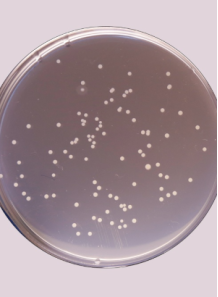Staphylococcus Aureus Counting Service
- Product Code: 127389
Staphylococcus Aureus Counting Service
description Service Overview
Materials and Equipment
- Sample (e.g., food, swab, or clinical specimen)
- Sterile diluent (e.g., buffered peptone water or saline solution)
- Stomacher or homogenizer (for solid samples)
- Sterile stomacher bags or tubes
- Pipettes and sterile pipette tips
- Sterile dilution tubes or containers
- Selective agar medium:
- Baird–Parker Agar supplemented with egg yolk tellurite (commonly used for S. aureus enumeration)
(Other selective media may be used depending on the protocol.)
- Baird–Parker Agar supplemented with egg yolk tellurite (commonly used for S. aureus enumeration)
- Sterile spreaders or disposable loops
- Incubator set at 35–37°C
- Colony counter or manual counting aids
- Personal Protective Equipment (PPE) (lab coat, gloves, eye protection)
Procedure
1. Sample Preparation
-
Weigh or Measure the Sample:
For solid samples (e.g., food), aseptically weigh 25 g and place it in a sterile stomacher bag. For liquid samples, measure an appropriate volume. -
Dilute the Sample:
Add 225 mL of sterile diluent to a 25 g sample to obtain an initial 1:10 dilution. Mix thoroughly using a stomacher or by vigorous shaking to ensure a homogeneous suspension.
2. Serial Dilution
- Prepare Serial Dilutions:
- Transfer 1 mL of the homogenized sample into 9 mL of sterile diluent to achieve a 1:100 dilution.
- Continue making further tenfold (1:10) serial dilutions as needed to obtain dilutions that yield countable colony numbers on the plates (ideally between 30 and 300 colonies per plate).
3. Plating
- Plating Technique:
- For each selected dilution, pipette 0.1 mL onto the surface of a pre-dried Baird–Parker agar plate.
- Use a sterile spreader (or disposable spreader) to evenly distribute the inoculum over the agar surface.
- Work carefully to avoid cross-contamination and to maintain aseptic conditions.
4. Incubation
- Incubate the Plates:
- Place the inoculated plates in an incubator set to 35–37°C.
- Incubate for 24 to 48 hours (check your specific protocol; some guidelines suggest 48 hours to allow for the typical colony morphology to develop).
5. Colony Identification and Counting
- Examine Plates:
- After incubation, inspect the plates for colonies. On Baird–Parker agar, S. aureus typically produces characteristic colonies:
- Appearance: Grey to black, shiny, convex colonies
- Halo: Often surrounded by a clear zone (due to lecithinase activity)
- After incubation, inspect the plates for colonies. On Baird–Parker agar, S. aureus typically produces characteristic colonies:
- Count Colonies:
- Select plates that have between 30 and 300 colonies for reliable enumeration.
- Count all typical colonies on the plate. If counts vary between dilutions, choose the dilution that provides the most statistically reliable count.
timeline Service Steps
| Step | Procedure | Expected Result |
|---|---|---|
| info Service steps will be provided upon request | ||
Cart
No products
Subtotal:
0.00
Total
0.00
THB



